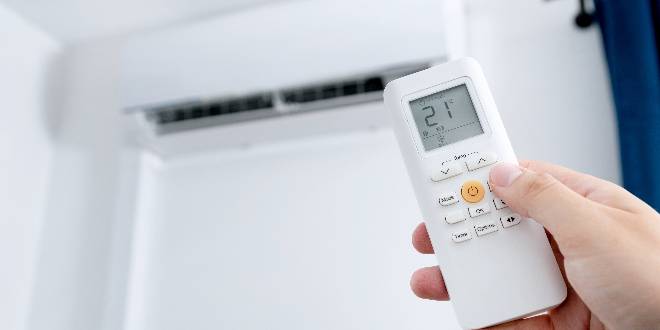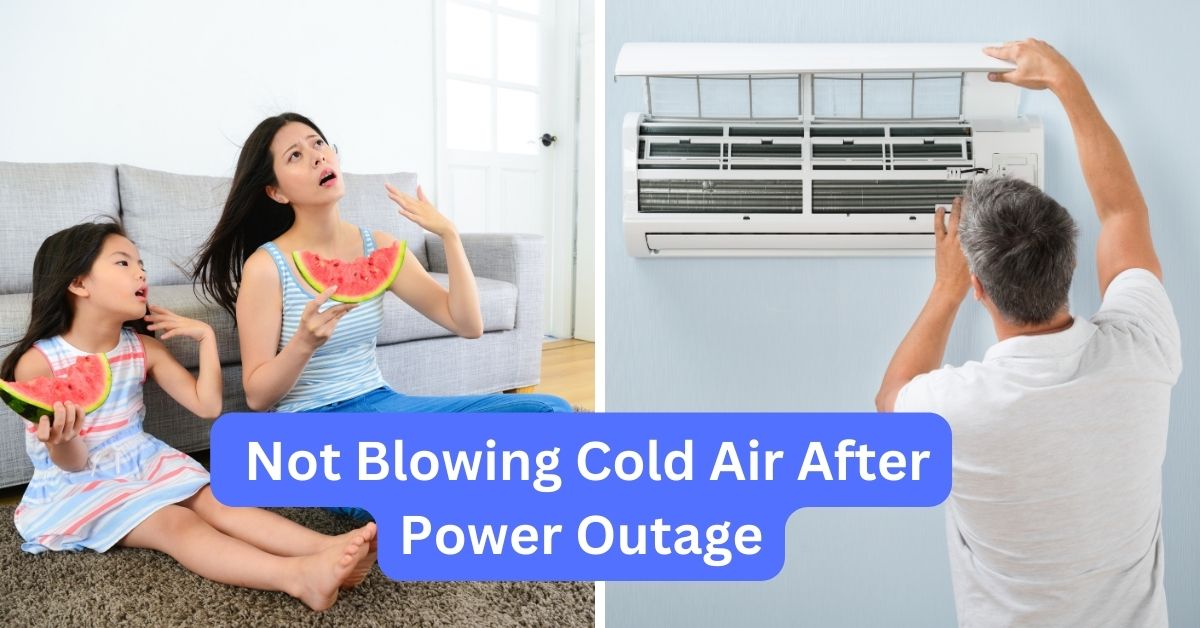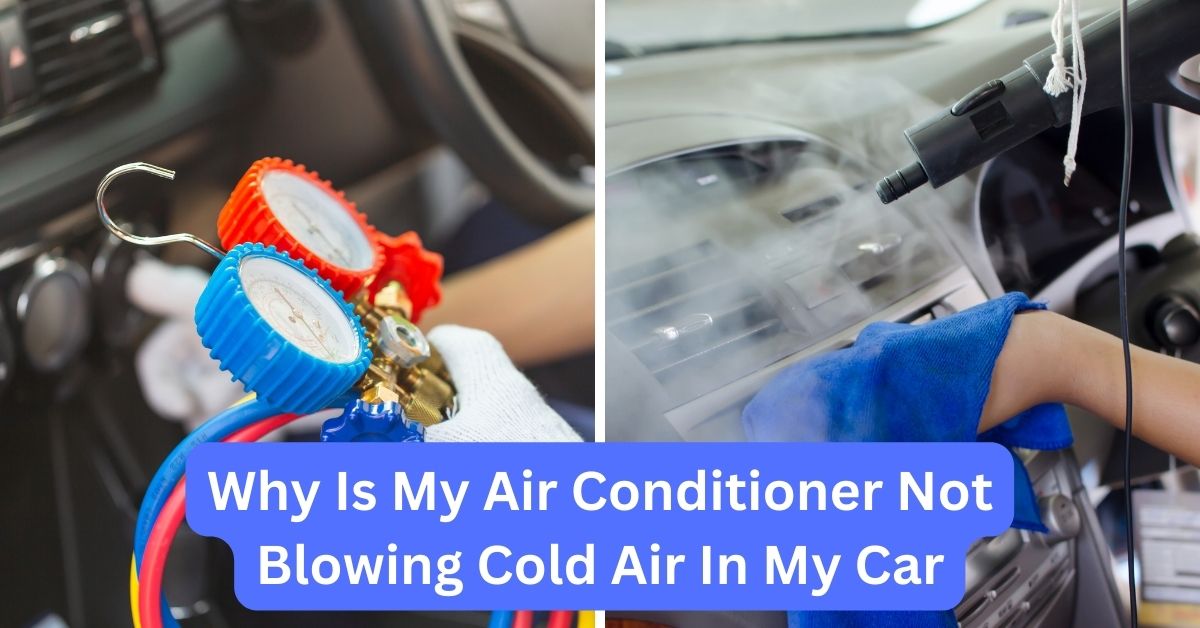Air Conditioner Blowing Air But Not Cold

An air conditioner blowing air but not cold is a common and frustrating problem. It signifies that your AC system isn't effectively removing heat from your home. This guide will help you understand the potential causes, troubleshoot the issue, and determine whether you can fix it yourself or need professional assistance.
Understanding the Basics: How Your AC Works
Before diving into troubleshooting, it's crucial to grasp the fundamental principles of how your air conditioner operates. Your AC system has two main components: the evaporator coil (usually inside your house) and the condenser coil (typically located outside).
Think of refrigerant as the "blood" of your AC system. This special chemical circulates between the evaporator and condenser coils. The evaporator coil absorbs heat from the air inside your home, cooling it down. The refrigerant, now heated, travels to the condenser coil outside. The condenser releases this heat to the outside air, and the refrigerant cools down, restarting the cycle.
The process requires a compressor to pressurize the refrigerant, fans to circulate air over the coils, and a thermostat to control the temperature. If any of these components malfunction, your AC may blow air but not cool effectively.
Potential Causes and Troubleshooting Steps
Here's a breakdown of the most common reasons why your AC might be blowing warm air:
1. Dirty Air Filter
A dirty air filter is the most frequent cause of this problem. A clogged filter restricts airflow, preventing the evaporator coil from absorbing heat properly. This can lead to the coil freezing up, further reducing cooling capacity. Imagine trying to breathe through a clogged mask – your AC faces a similar challenge.
Troubleshooting:
- Check the air filter: Locate the filter (usually in the indoor unit or near the return air vent). Remove it and inspect it. If it's visibly dirty or clogged, replace it immediately.
- Filter Replacement: Use a filter of the correct size and MERV (Minimum Efficiency Reporting Value) rating recommended by your AC manufacturer.
- Regular Maintenance: Aim to replace your air filter every 1-3 months, depending on usage and air quality.
2. Refrigerant Leaks
Refrigerant is essential for the cooling process. If there's a refrigerant leak, your system won't have enough refrigerant to absorb heat effectively. Think of it like a car running low on fuel – it can't perform as it should.
Symptoms of a Refrigerant Leak:
- AC blowing warm air.
- Hissing or bubbling sound near the AC unit.
- Ice buildup on the evaporator coil.
- Higher-than-normal energy bills.
Troubleshooting:
- Inspect for visible leaks: Look for oily residue or ice formation on the refrigerant lines and connections.
- Listen for unusual sounds: Pay attention to any hissing or bubbling noises near the unit.
- Professional Diagnosis: Refrigerant leaks require professional attention. Do not attempt to handle refrigerant yourself, as it's a regulated substance and can be harmful. A qualified HVAC technician will need to locate and repair the leak, then recharge the system with the correct amount of refrigerant.
3. Frozen Evaporator Coil
A frozen evaporator coil prevents the AC from absorbing heat. This often happens due to restricted airflow (dirty air filter) or low refrigerant levels. When the coil is too cold, moisture condenses and freezes, creating a layer of ice that insulates the coil and hinders heat transfer.
Troubleshooting:
- Check the air filter: As mentioned earlier, a dirty air filter is a primary cause. Replace it if necessary.
- Turn off the AC: Turn off your AC system at the thermostat and allow the ice to thaw completely. This may take several hours.
- Run the fan: After turning off the AC, run the fan only to help melt the ice faster.
- Identify the cause: Once the coil has thawed, try to determine the underlying cause (dirty filter, refrigerant leak, etc.). Address the cause before turning the AC back on.
- Professional Inspection: If the coil freezes again shortly after thawing, or if you suspect a refrigerant leak, contact a professional HVAC technician.
4. Dirty Condenser Coil
The condenser coil is located outside and is responsible for releasing heat. If it's covered in dirt, debris, leaves, or grass clippings, it can't effectively dissipate heat, causing the AC to blow warm air. Think of it as trying to run with a heavy coat on a hot day – your body can't cool down properly.
Troubleshooting:
- Inspect the condenser coil: Visually inspect the outdoor unit for any obstructions.
- Clean the coil: Use a garden hose (with a gentle spray nozzle) to carefully clean the coil. Spray from the inside out to avoid bending the fins. Avoid using high-pressure washers, as they can damage the delicate fins.
- Clear surrounding area: Ensure there's adequate space around the condenser unit for proper airflow. Trim any shrubs or plants that are too close.
5. Faulty Compressor
The compressor is the heart of your AC system. It pressurizes the refrigerant, enabling it to circulate and absorb heat. If the compressor is failing, it won't be able to perform its function, resulting in warm air. Compressor failure is a serious issue and often requires professional replacement.
Symptoms of a Faulty Compressor:
- AC blowing warm air.
- Unusual noises coming from the outdoor unit (grinding, rattling, or humming).
- The compressor isn't turning on at all.
- Circuit breaker tripping frequently.
Troubleshooting:
- Listen for unusual noises: Pay attention to any strange sounds coming from the outdoor unit.
- Check the circuit breaker: Ensure the circuit breaker for the AC unit hasn't tripped.
- Professional Diagnosis: Compressor issues require professional diagnosis and repair. Replacing a compressor is a complex and expensive task that should only be performed by a qualified HVAC technician.
6. Ductwork Leaks
Leaky ductwork can cause a significant loss of cool air, especially in attics or crawl spaces. If your ductwork has holes or gaps, the cooled air escapes before it reaches the vents in your home. This leads to wasted energy and reduced cooling efficiency.
Troubleshooting:
- Inspect visible ductwork: Check accessible ductwork (in attics, basements, or crawl spaces) for obvious signs of damage, such as tears, holes, or disconnected sections.
- Feel for air leaks: On a hot day, feel around the ductwork connections for air leaks.
- Professional Duct Sealing: For hard-to-reach or extensive ductwork leaks, consider hiring a professional to seal the ducts. They can use specialized equipment, such as duct sealant or mastic, to effectively seal the leaks.
7. Thermostat Problems
A malfunctioning thermostat can prevent the AC from turning on or operating correctly. It might be misreading the temperature or have faulty wiring.
Troubleshooting:
- Check the thermostat settings: Ensure the thermostat is set to "Cool" and the temperature is set lower than the current room temperature.
- Check the batteries: If your thermostat is battery-powered, replace the batteries.
- Clean the thermostat: Gently clean the thermostat with a soft cloth to remove any dust or debris.
- Professional Inspection: If the thermostat still doesn't seem to be working correctly, consider having it inspected by an HVAC technician.
When to Call a Professional
While some AC problems can be resolved with simple troubleshooting steps, others require professional assistance. Here's a guide to help you decide when to call an HVAC technician:
- Refrigerant leaks: Handling refrigerant requires specialized equipment and training.
- Compressor problems: Replacing a compressor is a complex and expensive task.
- Electrical issues: Working with electrical components can be dangerous.
- Persistent problems: If you've tried the troubleshooting steps and the AC is still blowing warm air, it's time to call a professional.
- Lack of experience: If you're not comfortable working with electrical or mechanical systems, it's best to leave it to the experts.
Ignoring these issues can lead to further damage and more costly repairs in the long run. A qualified HVAC technician can accurately diagnose the problem, perform the necessary repairs, and ensure your AC system is running efficiently and safely.
Preventative Maintenance for Your AC
Regular preventative maintenance is key to keeping your AC system running smoothly and efficiently, and to preventing future problems. Here are some essential maintenance tasks:
- Change air filters regularly: As mentioned earlier, aim to replace your air filter every 1-3 months.
- Clean the condenser coil: Clean the outdoor unit at least once a year, or more often if it's located in a dusty or grassy area.
- Schedule professional maintenance: Have your AC system professionally inspected and serviced at least once a year. This includes checking refrigerant levels, cleaning the coils, inspecting the electrical components, and lubricating moving parts.
- Keep the area around the outdoor unit clear: Remove any debris, plants, or other obstructions that could restrict airflow.
By following these preventative maintenance tips, you can extend the lifespan of your AC system, improve its energy efficiency, and avoid costly repairs.










